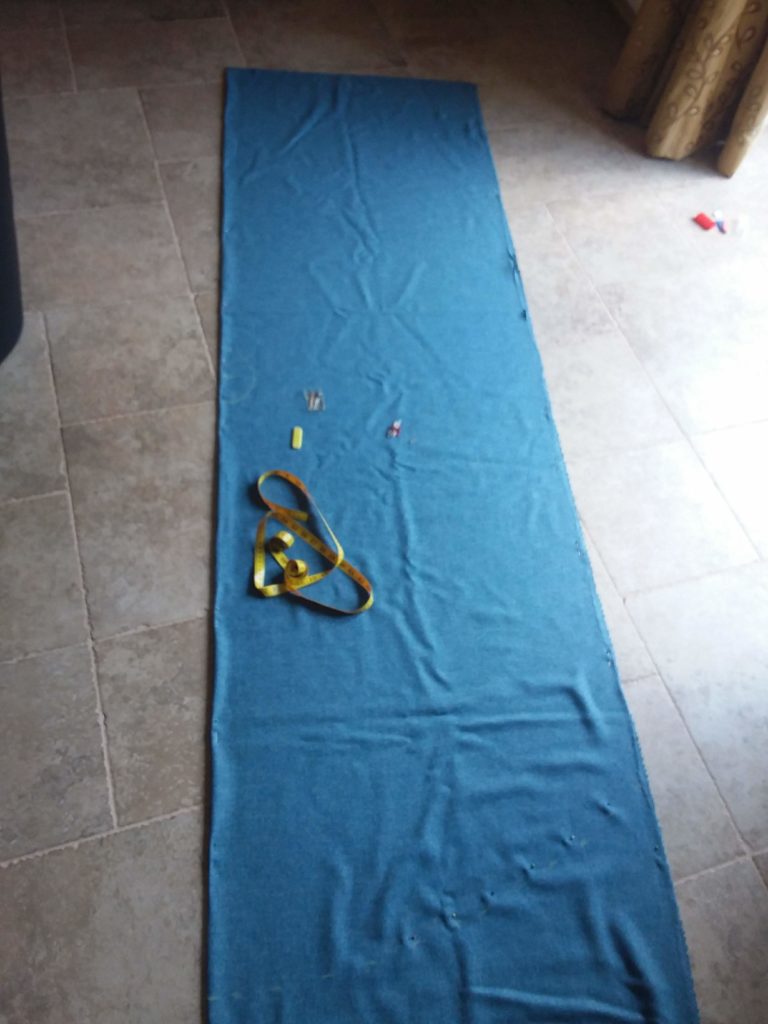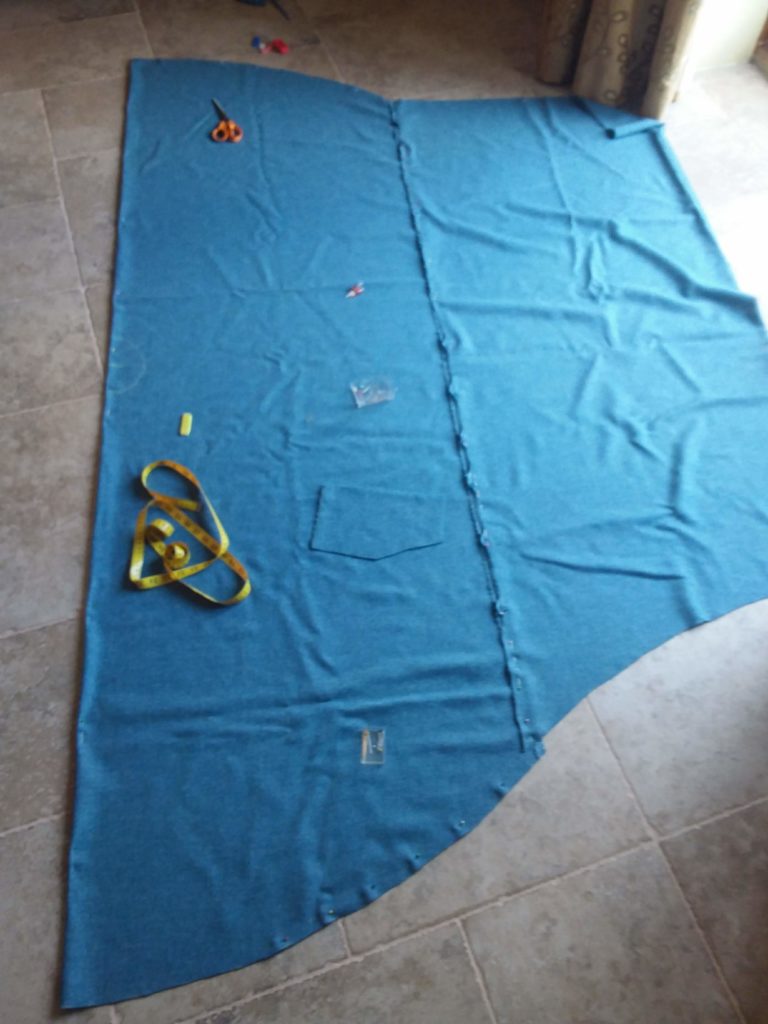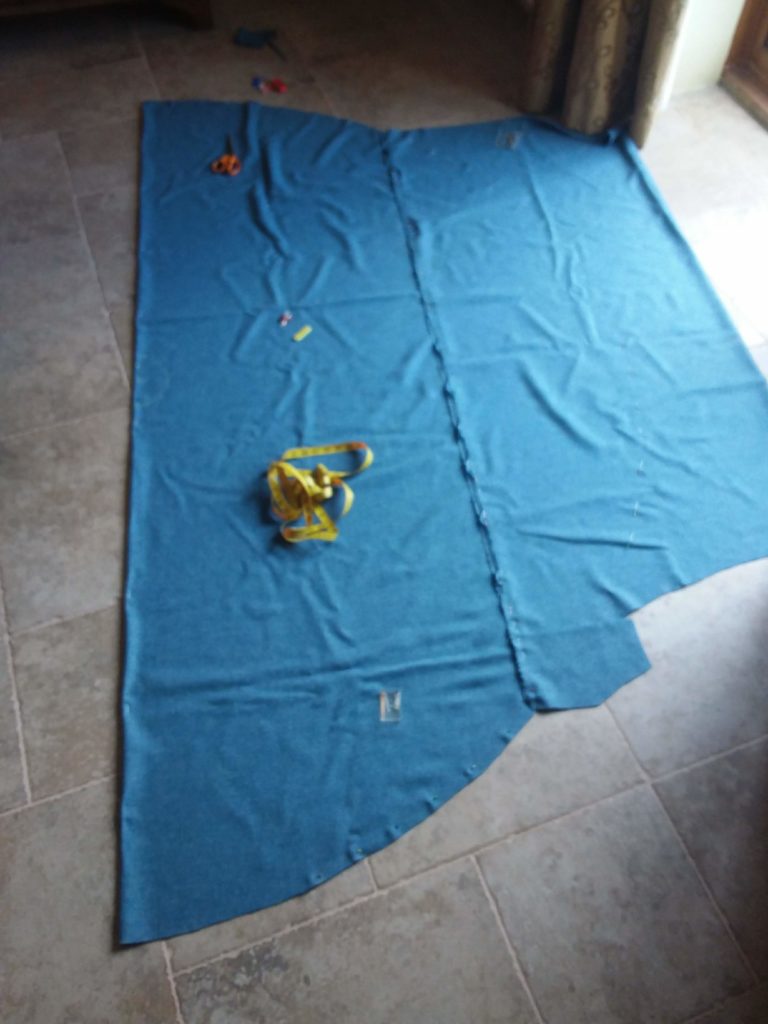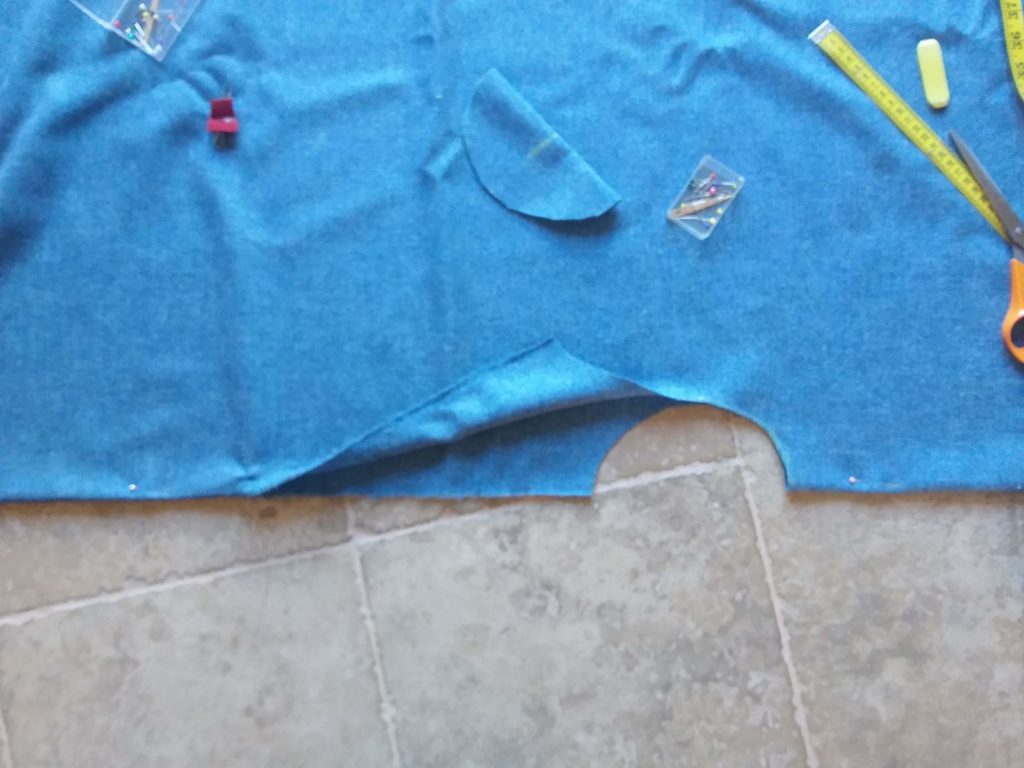For several years, I’ve been planning a mantle to go over my Anglo-Saxon nun outfits (working day and posh) so that I don’t have to wear my Viking shawl with them. As with pretty much all early mediaeval English outfits, we have very little material evidence and manuscript illustrations are a main source. In these, women often appear to be wearing an overgarment which allows them to raise their hands, the folds draping elegantly in front and behind. It appears that the front is shorter than the back.
For an example see the portrait of Saint Æthelthryth of Ely from the Benedictional of St. Æthelwold, an illuminated manuscript in the British Library.
The mantle has been variously reconstructed as a poncho and a cope. The Regia Anglorum kit guide shows a nice comparison of different overgarments as seen in manuscripts, but states definitively that the garment was closed, and cone-shaped like an ecclesiatical cope. I don’t think we can be sure of that, and I recently met with a very lovely lady who showed me her interpretation as a circular cloak with an open edge, which has the superb advantage that you don’t have to put it on or take it off over your head when wearing a wimple. She draped it so that the open edge was not particularly noticeable and its elegance and practicality won me over. A small brooch of classic Anglo-Saxon design will fasten the loose edge.
I had already bought a nice piece of grey wool, but it was not large enough for a circular mantle. So I have repurposed that as a semicircular cloak for my “working nun” outfit, a nice plain wool but to wear a semicircular cloak instead of a plain rectangle is definitely showing off! And I bought some lovely light-weight blue wool fabric recently, this time buying four metres to be sure of having enough for the circle. Some friends helped me measure it and I decided on a 120 cm length, to fall just below the knee, to be constructed of sections in a manner not unlike a planked shield.
Today I settled down to cut it out, with Al helping me to manage the tape measure and scribe the circle. I added 1cm to the length for hemming; really I should have done my maths first! See below.

Excellent! Thought I…I can cut two segments from the remainder and match selvedge to selvedge to save hemming. I’ve got lots of cloth!

And…when I pinned the spare cloth to the selvege, I found that I was 2cm short. That 1cm seam allowance was the mischief!

Fortunately the leftover piece from the start of the fabric is just barely big enough to piece in the necessary part, while still using selvedge. Phew, that was close! I have to comfort myself with the knowledge that Anglo-Saxons faced the same problems and used the same solutions. I did it on purpose to be more authentic, honest guv!

Finally, I cut a small neckhole (it’ll expand with hemming) and tore the fabric (to get a straight edge) down to the hemline to make an opening. Hurrah! My pieces are ready to sew, and A Project has been transformed into a simple job.Quite a long job, as the amount of hemming is significant, but straightforward. After that, I’ll design some embroidery for the neckline. Probably. Unless I’m fed up with sewing by then.